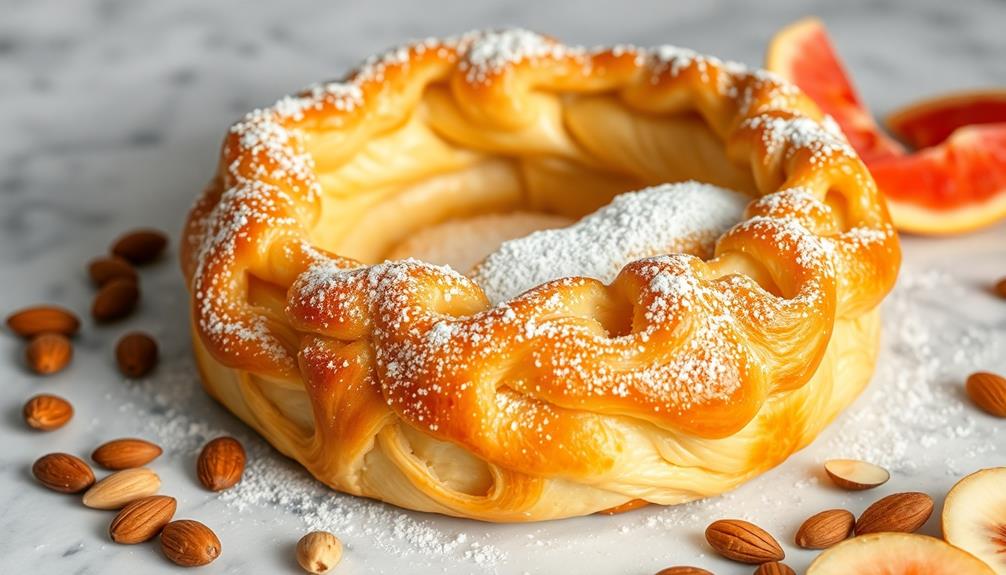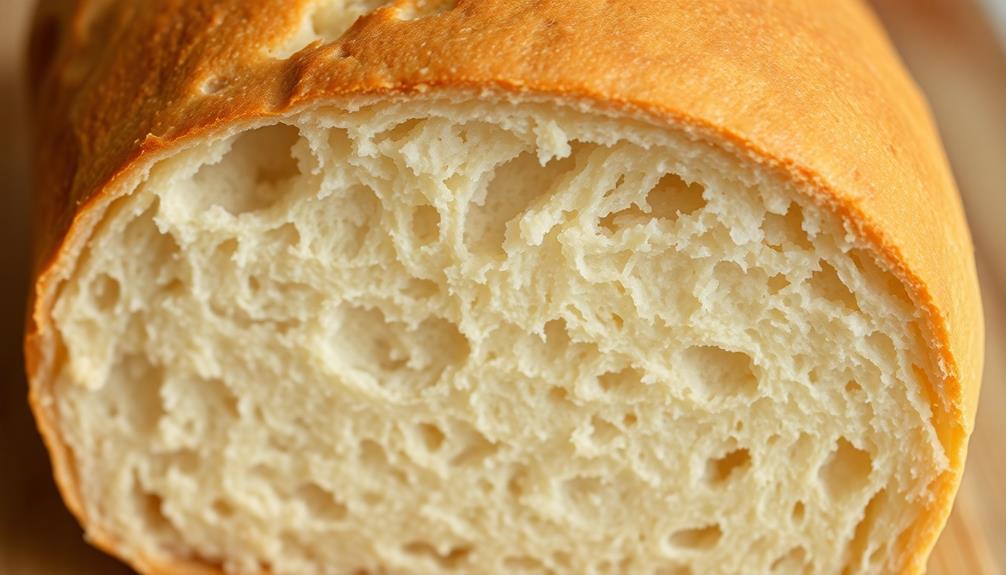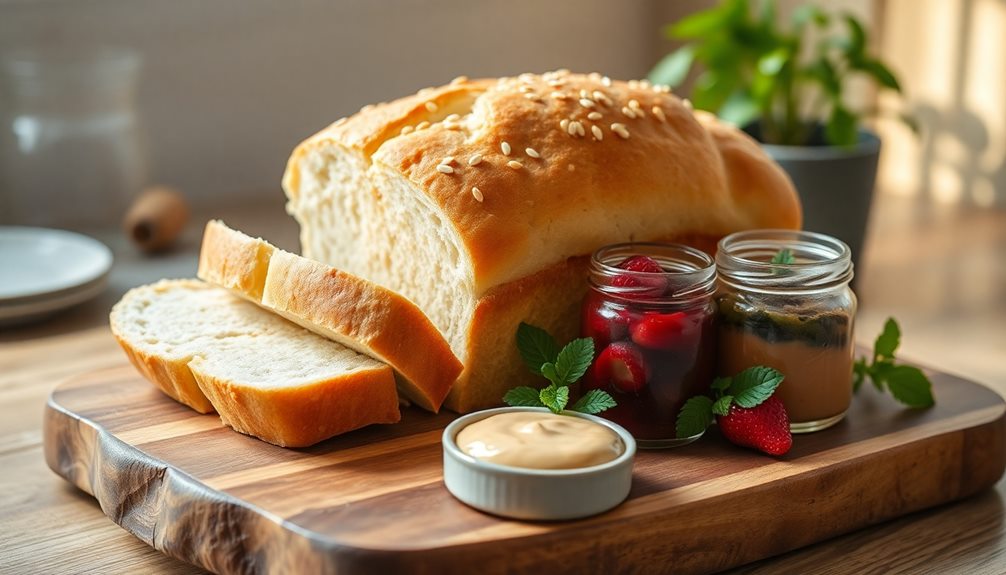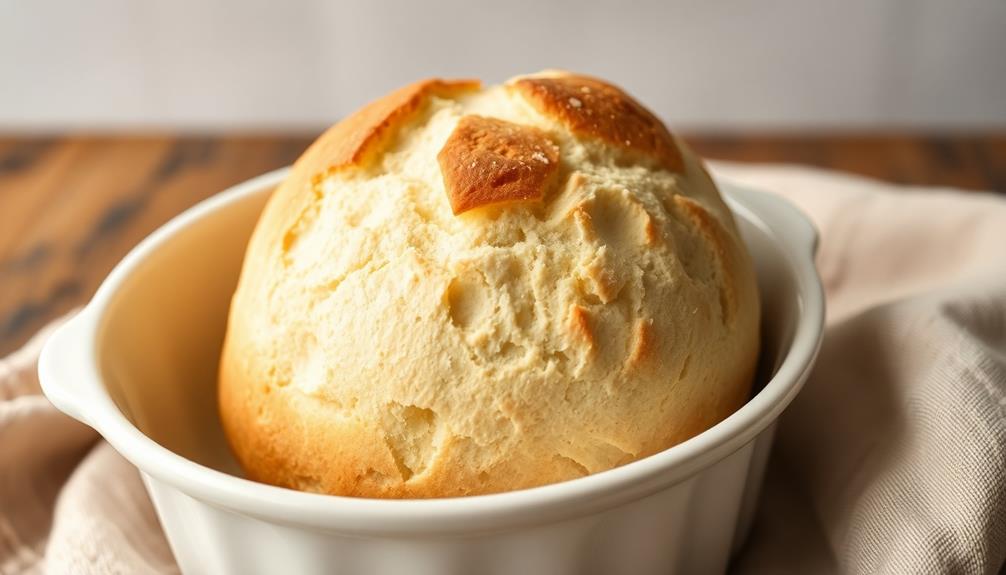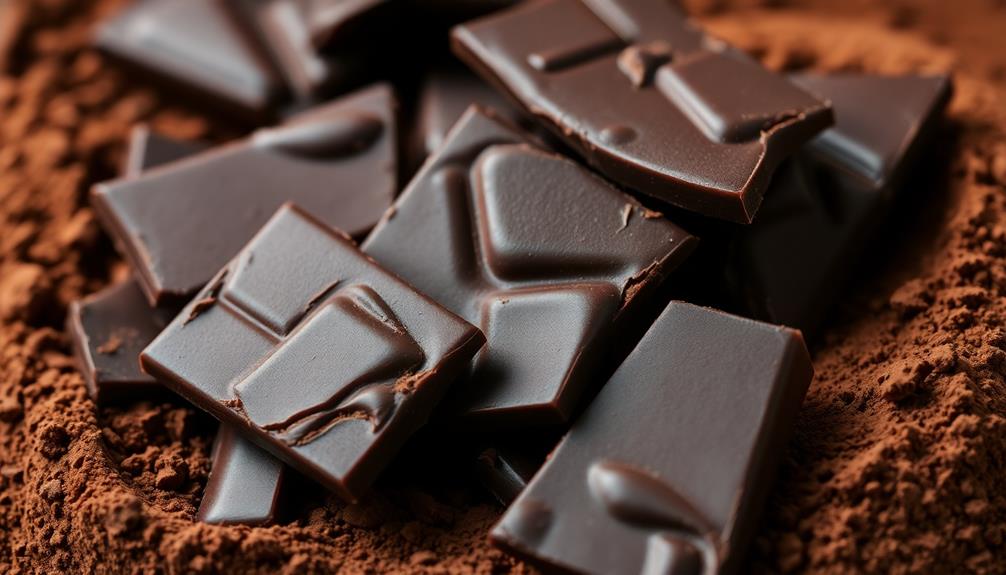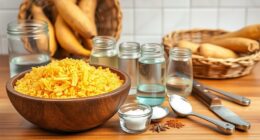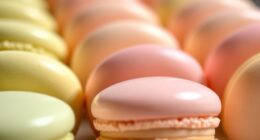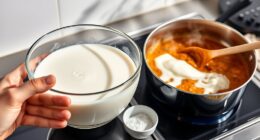Mastering the art of flaky, buttery puff pastry is an exciting baking adventure you'll love! Though its origins trace back to 17th-century France, today you can create your own bakery-worthy creations by following a few key steps. First, chill the dough and roll it out, then fold and turn it multiple times to build those luscious layers. Bake at a high temp for maximum puffiness and golden-brown perfection. With practice, you'll get the hang of this rhythmic process – and unlock a world of scrumptious pastries just waiting to be enjoyed. Keep exploring for more tips to perfect your puff pastry skills!
Key Takeaways
- Achieving flaky, buttery puff pastry requires precise layering techniques, such as folding the dough multiple times to create distinct layers.
- Proper temperature control, including chilling the dough and baking at high heat, is crucial for the pastry to puff up and develop a crisp, golden-brown crust.
- Paying attention to details, such as maintaining a clean work surface and evenly rolling the dough, helps ensure consistent results.
- Practicing the folding and turning process regularly can help build confidence and develop the necessary skills to master puff pastry baking.
- Experimenting with baking time and pastry placement can help determine the optimal conditions for your specific oven and achieve the perfect puff pastry every time.
History
Puff pastry's origins can be traced back to 17th-century France, where it was known as "feuilleté." The technique of layering dough with butter to create the signature flaky texture was likely developed by French bakers looking to elevate their baked goods.
Over time, the art of puff pastry became increasingly refined and popular, spreading throughout Europe and eventually to the rest of the world.
Today, puff pastry is a staple in many kitchens, used to create a wide variety of delectable treats, from savory appetizers to sweet desserts.
Whether you're a seasoned baker or just starting out, mastering the art of puff pastry can be a rewarding and satisfying journey. With the right techniques and a bit of practice, you'll be able to create light, airy, and irresistibly flaky pastries that will impress your family and friends.
Recipe
Puff pastry is a light, flaky, and delicate dough that can elevate any dish. Achieving the perfect puff pastry requires precision and attention to detail, but the results are well worth the effort. This recipe will guide you through the process of making a classic puff pastry from scratch.
Regular cleaning is essential for optimal performance in the kitchen, just as it's for maintaining air purifiers that ensure a healthier cooking environment.
The key to successful puff pastry lies in the layering process. By carefully folding and rolling the dough, you create thin layers of butter that, when baked, expand and create the signature flakiness. The dough must be chilled between each turn to ensure the layers remain distinct and the butter doesn't melt into the dough.
Ingredients:
- 2 cups (250g) all-purpose flour
- 1 teaspoon salt
- 1 cup (230g) unsalted butter, chilled and cut into cubes
- 1/2 cup (120ml) ice-cold water
Directions:
In a large bowl, combine the flour and salt. Add the chilled butter cubes and use your fingertips to incorporate the butter into the flour until the mixture resembles coarse crumbs.
Slowly add the ice-cold water, mixing just until the dough comes together. Shape the dough into a disk, wrap it in plastic wrap, and refrigerate for at least 30 minutes.
On a lightly floured surface, roll the chilled dough into a rectangle. Fold the dough into thirds, like a letter, and turn it 90 degrees. Roll the dough into a rectangle again and repeat the folding process.
Wrap the dough in plastic wrap and refrigerate for at least 30 minutes. Repeat this process of rolling, folding, and chilling three more times, for a total of four turns. After the final turn, the dough is ready to be used in your desired recipe.
When working with puff pastry, it's important to keep the dough chilled at all times. Avoid overworking the dough, as this can compromise the delicate layers.
Additionally, be sure to use a sharp knife or pizza cutter when cutting the dough to ensure clean, even cuts. With patience and attention to detail, you'll be rewarded with a flaky, buttery puff pastry that will elevate any dish.
Cooking Steps
Now, let's dive into the nitty-gritty of perfecting your puff pastry!
First, you'll need to chill the dough thoroughly to ensure it's nice and firm.
Next, roll out that dough with a steady hand to get it just right.
Then, you'll fold and turn the dough, repeating this process a few times to build those irresistible flaky layers. Once the dough has been folded and turned, it’s ready for the next step in the process: laminating butter into croissant dough. This involves layering the dough with thin sheets of cold butter, which will create even more flaky, buttery layers in the finished croissants. The butter must be carefully incorporated into the dough to ensure that the layers bake up light and airy.
Finally, bake it at a high temperature to achieve that golden, crispy perfection.
Get ready to impress your friends and family with your puff pastry prowess!
Step 1. Chill the Dough Thoroughly
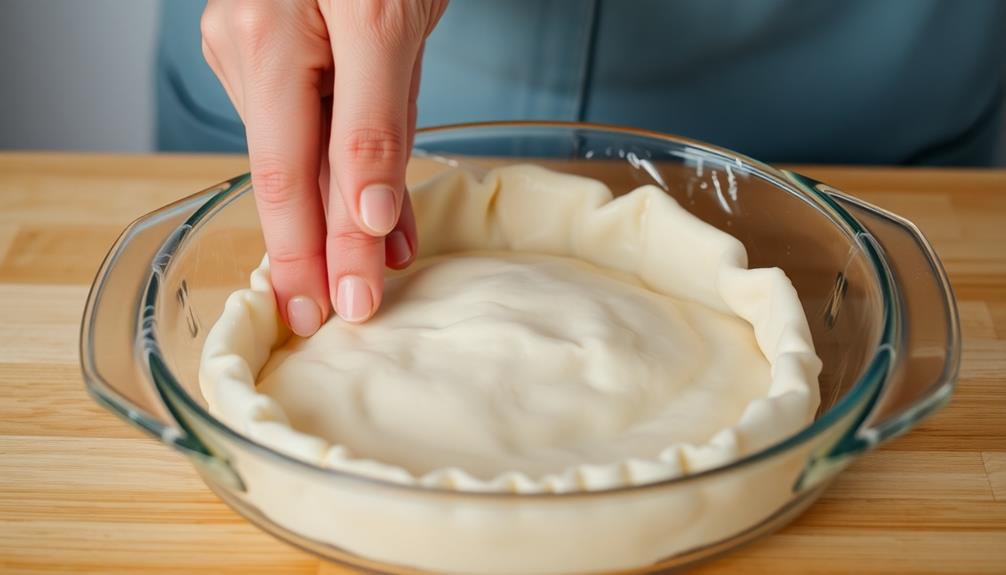
After preparing the dough, it's crucial to thoroughly chill it before proceeding. This step allows the gluten to relax, making the dough more workable. It also helps the butter firm up, which is essential for creating those mouthwatering, flaky layers.
You'll want to chill the dough for at least 30 minutes, but feel free to leave it in the fridge for up to 24 hours if you're not ready to bake right away.
Once chilled, the dough will be much easier to roll out without it sticking or tearing. Be sure to lightly flour your work surface and rolling pin to prevent any issues.
Take your time and roll the dough into the desired shape, being careful not to overwork it. The cold temperature will help the butter stay in place, resulting in those beautifully defined layers when the pastry bakes.
With a little patience and attention to detail, you'll be well on your way to perfecting your puff pastry!
Step 2. Roll Out the Dough
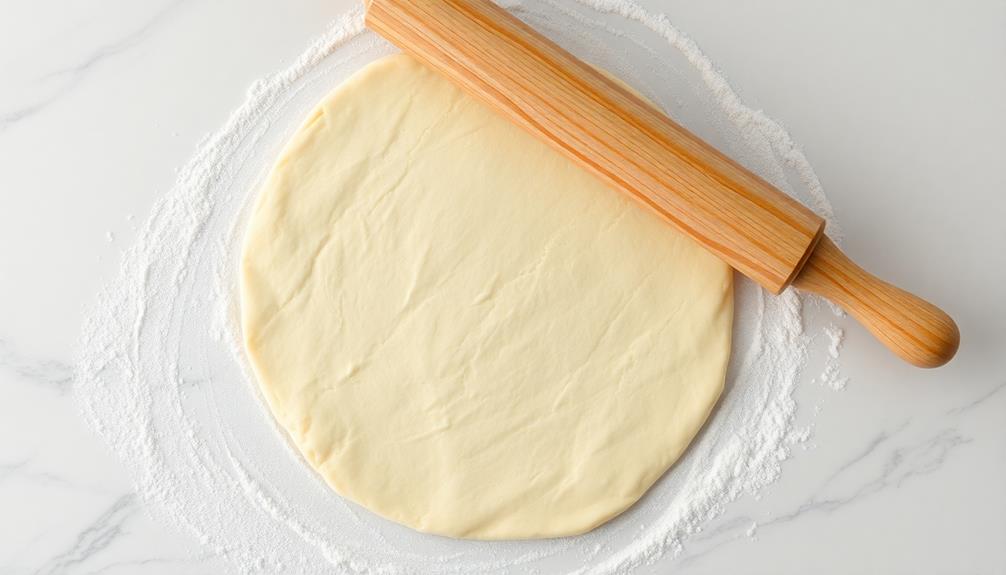
With the dough thoroughly chilled, it's time to roll it out. This step is crucial for achieving those delightful, flaky layers. Grab your rolling pin and get ready to work!
Lightly dust your clean work surface with a bit of flour. This will prevent the dough from sticking as you roll it out.
Now, place the chilled dough onto the floured surface. Using gentle, even strokes, start rolling the dough out. Roll it into a long rectangle, about 1/8 inch thick. Be sure to roll from the center outwards, keeping the edges even. If the dough starts to stick, simply dust a little more flour underneath.
Once you've rolled it out to the perfect thickness, it's time to fold the dough. Fold it into thirds, like a business letter. This process of rolling and folding is what creates all those delectable, buttery layers.
Repeat this process a few times, then your dough will be ready for the next step. Get ready for baking perfection!
Step 3. Fold and Turn the Dough

With the dough rolled out into a long rectangle, it's time to start the folding process. This is where the magic really happens! First, fold the dough in half, creating a square. Then, give it a quarter turn and fold it in half again. This is called a "double turn." You're creating those delicious, flaky layers we all love.
Now, roll the dough out into another long rectangle. Fold it in half again, and give it another quarter turn. That's the second double turn.
Keep repeating this process – roll, fold, turn – until you've done it a total of four or five times. Each time, you're building up those buttery, airy layers.
Be gentle as you work the dough. You don't want to overwork it and toughen up the gluten. Just take your time and enjoy the rhythmic folding and turning.
Soon, your puff pastry will be ready to bake to flaky perfection!
Step 4. Repeat Rolling and Folding Process
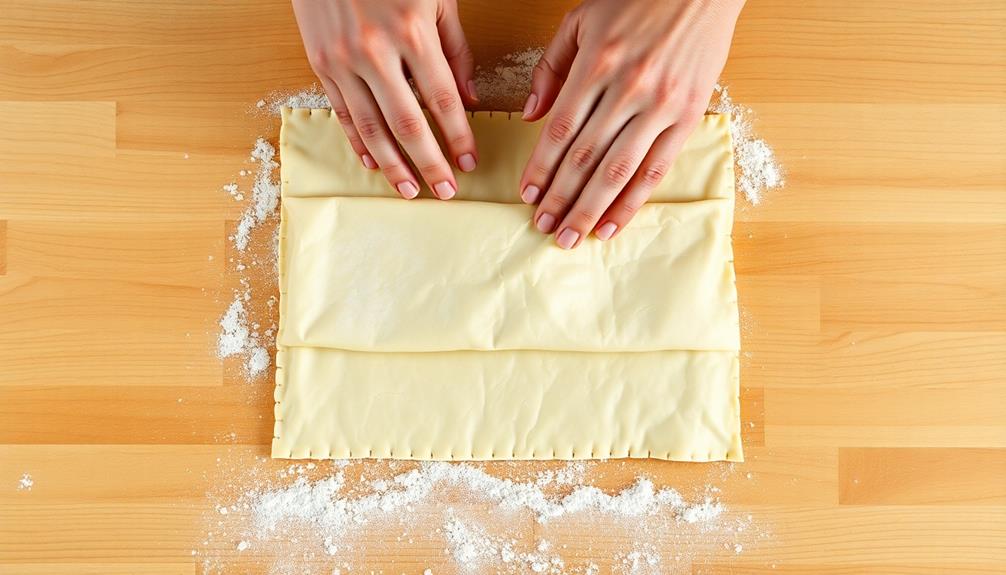
Now that you've completed the initial folding and turning, it's time to repeat the rolling and folding process. This is where the magic really happens, transforming your dough into those airy, flaky layers we all love.
First, lightly flour your work surface and gently roll the dough out into a long rectangle. Be careful not to overwork the dough – you want to keep those layers intact.
Fold the dough into thirds, like you'd fold a letter. Give it a quarter turn, and repeat the rolling and folding process.
Continue this cycle of rolling, folding, and turning for a total of 4-6 times. Each time, you'll notice the dough becoming smoother, more pliable, and the layers becoming more defined. This repetitive process is key to creating the perfect puff pastry texture.
Remember to chill the dough in the fridge for 30 minutes between each round of rolling and folding. This helps the butter stay firm and prevents the dough from becoming too warm and sticky.
Step 5. Bake at High Temperature

After the repeated rolling and folding, you'll bake your puff pastry at a high temperature. This is the secret to achieving those incredible, flaky layers. Crank your oven up to a scorching 400°F (200°C). The high heat is crucial – it helps the layers of dough and butter puff up and separate, creating that signature light and airy texture.
As your oven preheats, prepare your baking sheet. Line it with parchment paper to prevent sticking.
When the oven's ready, carefully transfer your rolled-out puff pastry dough onto the sheet. Make sure to leave a bit of space between each piece, as they'll expand during baking.
Pop the tray into the oven and set a timer for 18-22 minutes. Keep a close eye on it – the pastry should turn a beautiful golden brown.
Once it's puffed up and crispy, it's ready to come out. Let it cool for a few minutes before serving. Enjoy those flaky, buttery layers!
Final Thoughts
Perfecting puff pastry is no small feat, but with careful attention and a bit of practice, you'll be whipping up flaky, golden layers in no time. As you've seen, baking at a high temperature is key to achieving those mouthwatering results.
But the journey doesn't end there. To truly master puff pastry, it's all about paying attention to the little details. Don't be afraid to experiment and find what works best for your oven and your technique. Maybe you need to adjust the baking time or the placement of your pastries. Perhaps you'll discover a trick for getting that perfect golden-brown crust.
The most important thing is to keep an open mind and have fun with it. Puff pastry may seem intimidating, but with each batch, you'll gain more confidence and skill.
Before you know it, you'll be producing bakery-worthy creations that will impress your friends and family. So embrace the journey, and enjoy every flaky, buttery bite!
Frequently Asked Questions
What Type of Butter Is Best for Making Puff Pastry?
The best type of butter for making puff pastry is unsalted, high-quality butter. It should have a high fat content, typically around 82-84%, which helps create the distinct flaky, buttery layers. Using the right butter is crucial for achieving the perfect puff pastry.
Can I Substitute Oil or Margarine for Butter in Puff Pastry?
You can't really substitute oil or margarine for butter in puff pastry. Butter is essential for creating the flaky, buttery layers that make puff pastry so delicious. Using a non-dairy fat won't give you the same results.
How Can I Prevent My Puff Pastry From Getting Soggy?
To prevent your puff pastry from getting soggy, ensure you fully bake it, avoid overfilling it, and store it properly in an airtight container. Proper technique and handling are key to maintaining the pastry's flakiness and preventing sogginess.
Is It Possible to Make Puff Pastry Ahead of Time?
Yes, you can make puff pastry ahead of time. Wrap the dough tightly in plastic wrap and refrigerate it for up to 3 days. This will allow the gluten to relax, making it easier to roll out when you're ready to use it.
What's the Difference Between Puff Pastry and Phyllo Dough?
Puff pastry and phyllo dough are quite different. Puff pastry is a laminated dough, made by encasing butter between layers of dough, creating a flaky, buttery texture. Phyllo, on the other hand, is a tissue-thin, crisp pastry dough.
